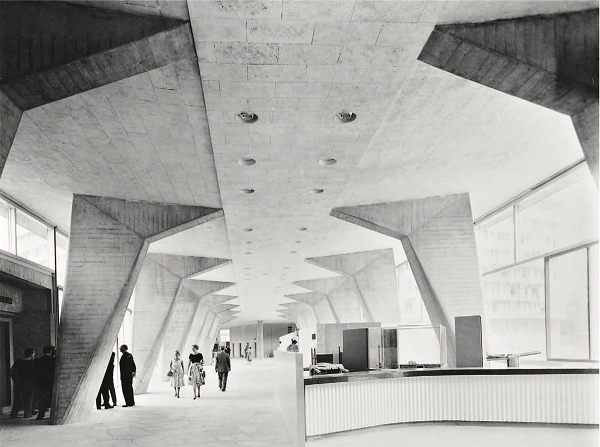정준모
How Brutalist Luminary Marcel Breuer Became a Master of Concrete

Saint John’s Abbey Church, Collegeville, Minnesota, 2009. Photo by Bobak Ha’Eri, via Wikimedia Commons.
In Marcel Breuer
’s buildings, heavy concrete slabs appear to soar. The famed mid-century architect transformed the raw material into era-defining institutions, both religious and bureautic. A flying carpet-shaped entrance to Paris’s curved UNESCO buildings (1956); a flat, elevated belltower outside St. John’s Abbey in Collegeville, Minnesota (1954); and airborne sky bridges at the New York University Bronx campus (1964) are all testaments to how masterfully he worked with the medium.
Along with a small group of his contemporaries, Breuer helped reconsider the lyrical potential of the durable, utilitarian substance. His concrete buildings, in particular, made him into a leading figure of the mid-century Brutalist movement
—which favored raw, exposed materials, often employed for massive, institutional projects.
Breuer, who was born in Hungary in 1902, studied and taught at the famed Bauhaus
, the school of fine and applied art in Weimar and Dessau, Germany, in the 1920s. In 1925, he first gained major acclaim as he developed the first-ever tubular steel chair, which he called the “Wassily” (named for his fellow Bauhaus instructor Wassily Kandinsky
, who bought the first one). “Breuer designed the very first modern furniture,” Museum of Modern Art design curator J. Stewart Johnson once told the Washington Post. “Before him, there was no truly modern interior design.”

FAMILY SITE
copyright © 2012 KIM DALJIN ART RESEARCH AND CONSULTING. All Rights reserved
이 페이지는 서울아트가이드에서 제공됩니다. This page provided by Seoul Art Guide.
다음 브라우져 에서 최적화 되어있습니다. This page optimized for these browsers. over IE 8, Chrome, FireFox, Safari